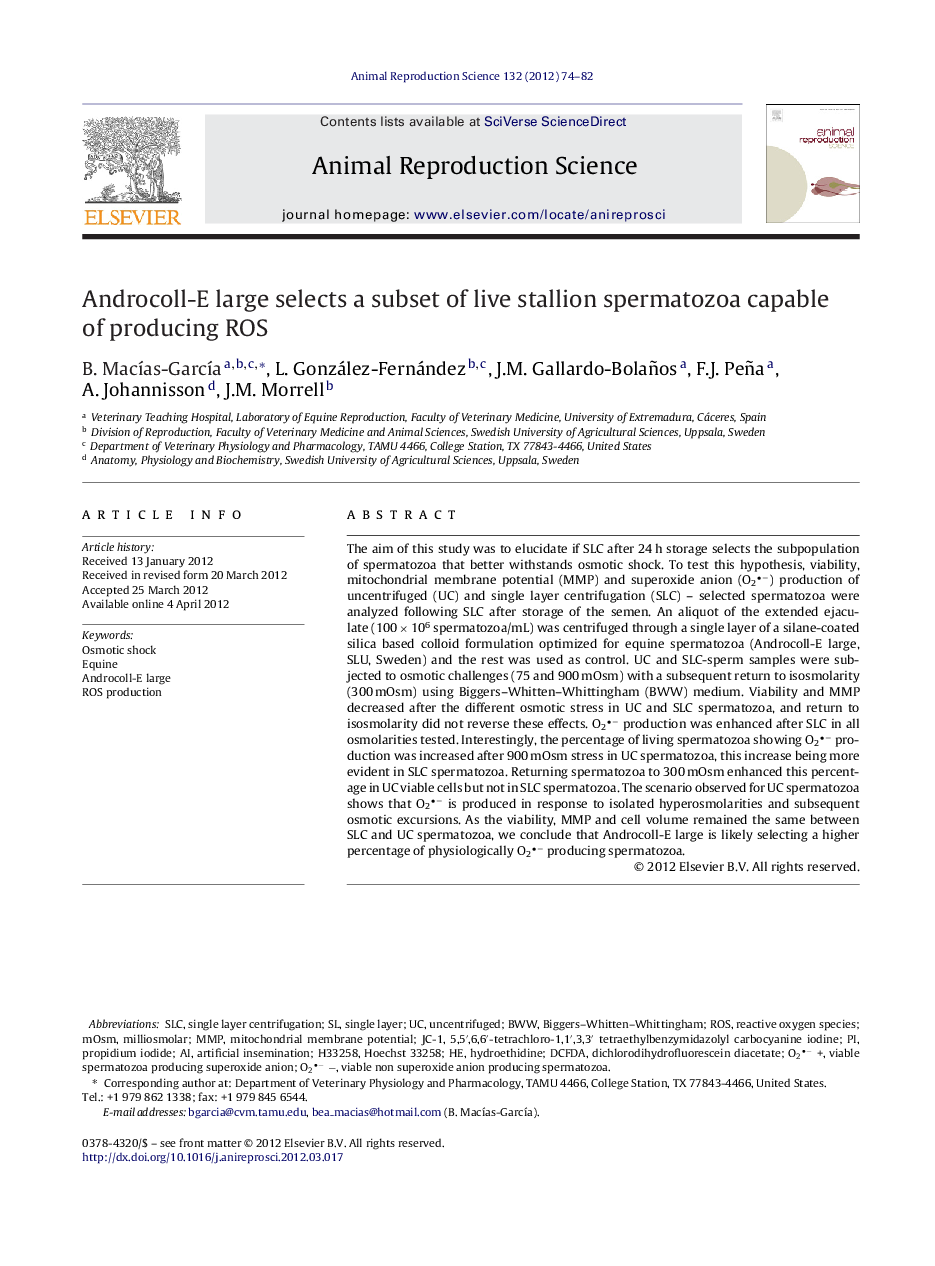| کد مقاله | کد نشریه | سال انتشار | مقاله انگلیسی | نسخه تمام متن |
|---|---|---|---|---|
| 2073180 | 1544761 | 2012 | 9 صفحه PDF | دانلود رایگان |
عنوان انگلیسی مقاله ISI
Androcoll-E large selects a subset of live stallion spermatozoa capable of producing ROS
دانلود مقاله + سفارش ترجمه
دانلود مقاله ISI انگلیسی
رایگان برای ایرانیان
کلمات کلیدی
DCFDABWWHoechst 33258mOsmJC-1SLCMMPROS - ROSEquine - اسبROS production - تولید ROSSingle layer - تک لایهArtificial insemination - درونکاشت مصنوعیdichlorodihydrofluorescein diacetate - دی کلستیدوفروفوروزین دی سکتهSingle layer centrifugation - سانتریفوژ تک لایهOsmotic shock - شوک اسموتیHydroethidine - هیدروتیدینMitochondrial membrane potential - پتانسیل غشای میتوکندریPropidium iodide - پروتئین یدیدReactive oxygen species - گونههای فعال اکسیژن
موضوعات مرتبط
علوم زیستی و بیوفناوری
علوم کشاورزی و بیولوژیک
علوم دامی و جانورشناسی
پیش نمایش صفحه اول مقاله

چکیده انگلیسی
The aim of this study was to elucidate if SLC after 24Â h storage selects the subpopulation of spermatozoa that better withstands osmotic shock. To test this hypothesis, viability, mitochondrial membrane potential (MMP) and superoxide anion (O2â) production of uncentrifuged (UC) and single layer centrifugation (SLC) - selected spermatozoa were analyzed following SLC after storage of the semen. An aliquot of the extended ejaculate (100Â ÃÂ 106Â spermatozoa/mL) was centrifuged through a single layer of a silane-coated silica based colloid formulation optimized for equine spermatozoa (Androcoll-E large, SLU, Sweden) and the rest was used as control. UC and SLC-sperm samples were subjected to osmotic challenges (75 and 900Â mOsm) with a subsequent return to isosmolarity (300Â mOsm) using Biggers-Whitten-Whittingham (BWW) medium. Viability and MMP decreased after the different osmotic stress in UC and SLC spermatozoa, and return to isosmolarity did not reverse these effects. O2â production was enhanced after SLC in all osmolarities tested. Interestingly, the percentage of living spermatozoa showing O2â production was increased after 900Â mOsm stress in UC spermatozoa, this increase being more evident in SLC spermatozoa. Returning spermatozoa to 300Â mOsm enhanced this percentage in UC viable cells but not in SLC spermatozoa. The scenario observed for UC spermatozoa shows that O2â is produced in response to isolated hyperosmolarities and subsequent osmotic excursions. As the viability, MMP and cell volume remained the same between SLC and UC spermatozoa, we conclude that Androcoll-E large is likely selecting a higher percentage of physiologically O2â producing spermatozoa.
ناشر
Database: Elsevier - ScienceDirect (ساینس دایرکت)
Journal: Animal Reproduction Science - Volume 132, Issues 1â2, May 2012, Pages 74-82
Journal: Animal Reproduction Science - Volume 132, Issues 1â2, May 2012, Pages 74-82
نویسندگان
B. MacÃas-GarcÃa, L. González-Fernández, J.M. Gallardo-Bolaños, F.J. Peña, A. Johannisson, J.M. Morrell,